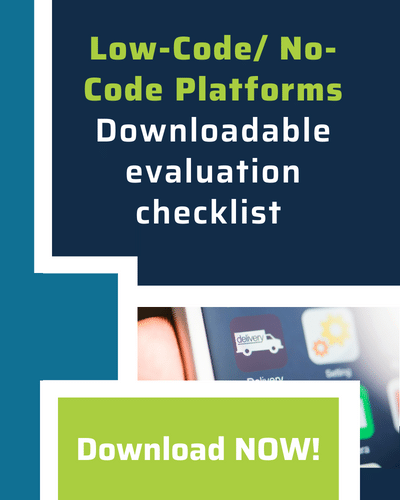“Transform-code” facilitates automatic conversion of outdated language, giving enterprises a jumpstart on transformation.
We frequently hear the terms low-code and no-code programming—almost to the point of blurring the lines between them. Part of the confusion comes from the fact that many vendors offer both low-code and no-code solutions for ISVs, which can be used in tandem or as respective, stand-alone products.
However, low-code and no-code development are two distinct disciplines. Recognizing the differences between them will help people understand the emergence of one of the industry’s most innovative next-gen development techniques: What we now call “transform-code.” These tools can help enterprises that have complex, antiquated legacy environments, allowing them to modernize their ERP environments faster and more cost-effectively.
Transform-code reduces the complexity of legacy environments by automatically converting antiquated code in existing business software applications into more modern code. Yet this process maintains all the legacy information that has been built into the application over the years, so developers don’t have to recreate this valuable “tribal business logic” from scratch.
The transform-code process gives large enterprises a more clarified and modernized starting point from which to build new and innovative applications for the different departments in their organizations. This way, companies looking to upgrade their applications can more easily transition to mobile-ready, cloud-native versions that will improve productivity and create significant efficiencies.
However, let’s define low-code and no-code to show how transform-code is distinct:
No-Code Development: Approaching Code The LEGO-Block Way
Here’s the easiest way to explain no-code programming: It’s the developer’s version of working with LEGO bricks. Instead of recreating the many mundane, redundant sequences involved in coding from scratch, designers can build complex business applications using intuitive, self-explanatory, pre-configured blocks of code that include the basic programming required to perform certain computing tasks.
Just like with LEGO blocks, designers don’t need to know how the block has been created. As long as they can intuitively connect the blocks of code, they can build the applications they need with these tools, saving precious time and labor. This applies to anything from simple applications to complex code and mission-critical business processes. No-code programming allows anyone with a bit of tech-savvy and knowledge of their company’s business needs to create a useful program. In fact, low-code programming is frequently used to teach children how to program, as with the MIT “Scratch” method.
Originally publish in VarInsights, read the complete article using this link



 Back
Back/Logo%20-%20black%20text%20blue%20pillar%20(large)-1.jpg)

